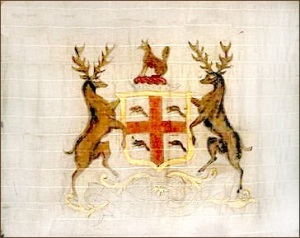 Canada is a perplexing concept; our country can often be conceptualized in shimmering positivity, and then, upon closer inspection can be dragged through the dusty and bloody streets of reality. This has often been the case when we teach history or have been taught history — we try to dichotomize issues, cultures, and versions of history as an experiment in critical thought or controversy. MacLennan’s Two Solitudes is an obvious example of cultural paradoxes within the “narrative” of Canada, as is the the story of the Winnipeg General Strike.
Canada is a perplexing concept; our country can often be conceptualized in shimmering positivity, and then, upon closer inspection can be dragged through the dusty and bloody streets of reality. This has often been the case when we teach history or have been taught history — we try to dichotomize issues, cultures, and versions of history as an experiment in critical thought or controversy. MacLennan’s Two Solitudes is an obvious example of cultural paradoxes within the “narrative” of Canada, as is the the story of the Winnipeg General Strike.
In Manitoba we experience this in the divide between indigenous and non-indigenous communities. Many Winnipeggers are placing their hope in our new mayor to help bridge these colonial divides and painful scars — a most difficult task to say the least. A recent CBC poll suggest that the divide between indigenous and nonindigenous on prairies and in Red River is considerably and alarminging wide: http://www.cbc.ca/news/canada/manitoba/people-on-the-prairies-less-tolerant-cbc-poll-says-1.2831876
In recent weeks, I have also been struck by an increasingly larger divide in Canada that is often left unarticulated – that is our image as a massive expanse of natural beauty contrasted with our 400 year history of resource exploitation. This really hit home when I attended the Hudson Bay Company Archives’ screening of Kevin Nikkel’s film Romance of the Far Fur Country . Nikkel has managed to splice together two hours of original HBC footage from 1919 and curate this silent footage in such a haunting way that the viewer really is able to situate themselves in the fur trade at the beginning of the 20th century.
As beautiful as the film is, however, there is a striking recognition that as the HBC enters into indigenous communities and encounters the immense landscape, that there is only one agenda: resource exploitation, both natural and human.
What follows in the film is a shocking barrage of the treatment of the first peoples of Canada and the land itself. Created by the HBC in 1919 as a celebratory film and ultimately an advertisement for its first department stores, the Company was simply not aware of its savage devastation of all systems on earth – at least this is what I hope.
As the film ended and everyone left the Archives of Manitoba, my friend (who I dragged out) and I silently sat in our seats trying to process what we had just witnessed.
A few days later, I came across this photo essay in the Globe and Mail encapsulating life in Fort McMurray. I was astounded at the level of consumerism, greed, and resource exploitation that is completely unabashed.
You will notice one photo of a gentleman in a cowboy hat drinking a Coors’ Light. At first glance I thought nothing of it, and then my uber critical thinker of a wife alerted me to the paradox: A cowboy hat is a symbol of freedom. It conjures up imagery of connection to the land, notions of freedom and autonomy, and a recognition of the interconnectedness of the natural systems that sustain the land. . The fellow in the coffee shop, however, who works for Suncor, is part of a system of resource exploitation that destroys these vast and wild lands. He’s a slave to consumption and a dogged drive for wealth accumulation above all else. This is not the wild west. This is as well-engineered money generating machine with little room for cowboy antics.
But this does fit with our history. It sounds like the HBC in 1919.
And so, as Canada delves further into oil sands development, pipeline construction, and dependence on fossil fuels, so too continues the dichotomy of Canada. On one hand we have a country jam packed with scientifically-literate, empathetic citizens who cherish our land, water, and air. On the other, we are complicent in an economic and political system that is bent on exploiting natural and human resources. These are the new two new solitudes of our time.
As Slavoj Zizek suggests, the ecological catastrophes of the present and future will not be solved by free markets and corporations. No, Canada’s sick duality can only be synthesized into a sustainable vision through social and political action. This begins in the homes in Fort McMurray, at the kitchen tables of local constituency associations, and ultimately at the polls in 2015.
Canada’s reputation in the global community has soured as of late; we no longer lead in peacekeeping (we are ranked 65th), we rank first in deforestation, and our record on treating our indigenous peoples speaks for itself. I would reckon that we have an opportunity to build a better Canada — one that is sustainable, innovative, compassionate, and inclusive. Our first step, however, is to take an honest look at what we we have become. Let’s take off our cowboy hats for now. We have to earn the right to wear symbols of freedom. First we need to take the collective action necessary to shed the dichotomies of the past and create one singular and positive vision based on respect for the land and each other.